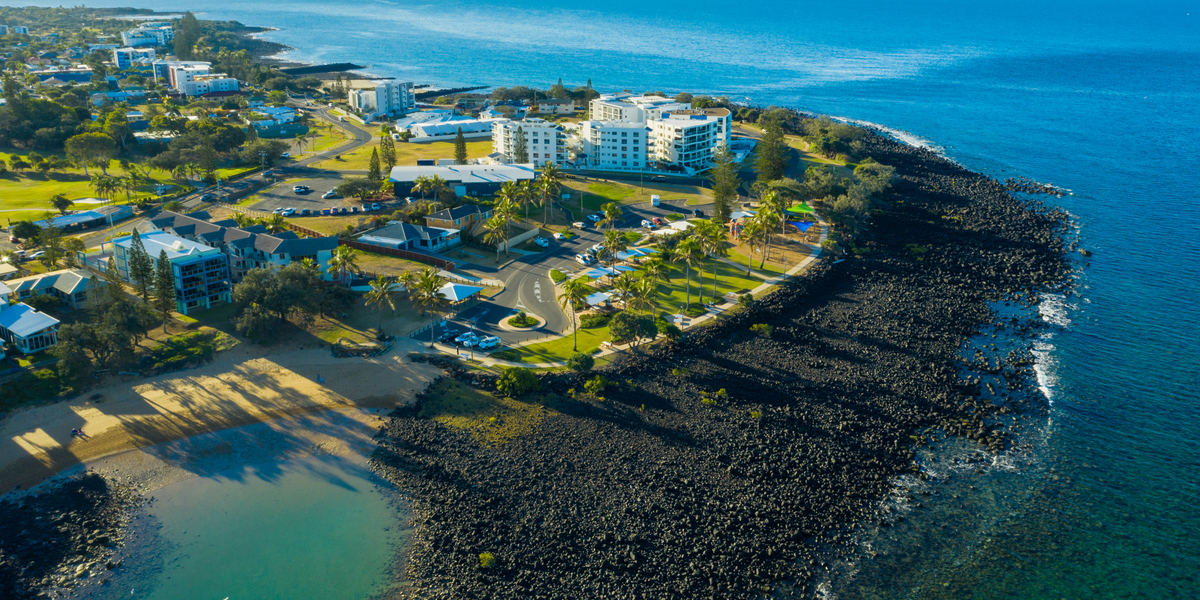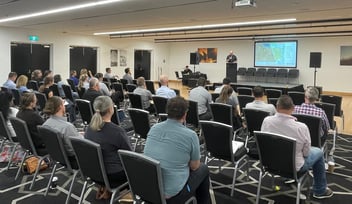Sustainable water planning boosts development

Bundaberg Regional Council's award-winning Bargara Emerging Community Infrastructure Planning project is designed to forge more resilient and sustainable communities in the face of climate challenges.
In 2021, Bundaberg Regional Council partnered with infrastructure consulting firm AECOM to prepare an integrated trunk infrastructure masterplan for the Bargara Emerging Communities Area.
Earmarked for future urban development, the coastal area sits just east of Bundaberg, on the edge of the Great Sandy Marine Park and the Great Barrier Reef. The land has the potential for 70 hectares of developable area, built around a 24-hectare "green infrastructure spine", which incorporates Moneys Creek.
The green infrastructure spine concept treats water as a valued asset with the potential to improve water quality outcomes, while also acting as an integrated public open space, waterway, natural floodplain and active transport corridor.
Rather than sacrificing space for development, optimising how flood water is stored and moved within the creek resulted in a 20-30% increase in developable land.
This water-centric approach to infrastructure planning saw the project win an Institute of Public Works Australasia (QNT) Innovation and Sustainability in Water award, as well as a Stormwater Queensland Excellence in Strategic or Master Planning award.
Holistic strategy
Rapid population growth and development pressure can often result in a fragmented approach to engaging with stakeholders and integrating with the natural environment.
This disconnection creates difficulties when addressing issues such as sustainable development, stormwater, flooding and ecological concerns, according to Timothy Fichera, Senior Engineer at Bundaberg Regional Council.
"This body of work will provide a holistical infrastructure plan for our emerging community areas prior to developers coming in," Fichera said.
"It provides the best opportunity to deliver the greatest value to the community, the developers and also for the natural environment."
AECOM Water Digital Leader (ANZ) Jordan Maultby said part of the challenge has been that planning for different infrastructure classes has been handled independently, such as water, transport and housing.
Such a disjointed approach means that planning decisions can clash. With the Bargara Emerging Community Infrastructure Planning project, Bundaberg Regional Council and AECOM chose to go down the more difficult path of getting all the stakeholders in a room to develop a holistic water-centric strategic plan for the area.
"This approach is admittedly more work upfront, but it delivers significantly better outcomes for everyone in the long run," Maultby said.
"Ensuring infrastructure networks make the most of natural waterways and wetlands, rather than trying to override or erase them, has environmental benefits, while also avoiding a lot of headaches and expense down the line."
Spine minded
The process fostered working with key landowners and developers to determine regional level infrastructure solutions, Fichera said, providing certainty and time-savings for developers through the approval process.
As part of this new approach, AECOM's multi-disciplinary team collaborated across several Bundaberg Regional Council departments to identify site constraints and opportunities, in order to develop an all-encompassing plan built around the green infrastructure spine.
The green infrastructure spine has been designed with future flood behaviour in mind, allowing for worst-case projected climate change impacts out to 2,100 waterway corridors and wetlands are sized and sequenced to effectively manage flood risk and water quality, for both the site and the broader catchment.
The proposed stormwater network is predicted to deliver a net improvement in water quality to the receiving environment, which includes the Great Sandy Marine Park.
The goal of improving water quality, rather than merely maintaining it, is in line with the Australian and Queensland Government's 'Reef 2050 Long-Term Sustainability Plan'.
One of the core tenets of the plan is to ensure that projects impacting the world heritage Great Barrier Reef deliver an environmentally neutral outcome, if not a benefit, rather than simply looking to minimise environmental harm.
Working in harmony with waterways rather than attempting to tame them might sound more expensive, but Maultby said it is actually more cost-effective.
Building "grey" infrastructure like concrete channels, pits, pipes and detention basins to manage water can be very difficult to maintain, because it's not a naturally balanced system and not resilient in the face of change.
"Nurturing a sustainable water environment makes a lot more economic sense than maintaining pipes," Maultby said, "Plus, you have more potential to sequester carbon rather than release more into the environment."
"Likewise, taking a watercentric approach to development avoids breaking up natural floodplains and catchment areas – not planning for the impact of water can leave you with ongoing disaster repair bills because you didn't consider the big picture."
Big picture
Working on the Bargara Emerging Community Infrastructure Planning project with AECOM has helped Bundaberg Regional Council ensure it places greater value on environmental outcomes and their wider benefits, Fichera said.
"Traditionally, stormwater planning's goal would just be getting that water from A to B as quickly as possible, hence the focus on seemingly easy grey infrastructure like concrete drains," he said.
"Looking at the big picture, you realise that with concrete drains you've built a single-functioning asset, which perhaps clashes with other assets. Alternatively, a green infrastructure spine does a great job of handling stormwater while delivering multiple benefits, making it a much more valuable asset overall."
Expanding this view to encompass all of the infrastructure planning teams, and then getting them to work in unison, ensures everyone benefits in both the short-term and long-term, Maultby said.
"Often, when you're working with water infrastructure on a brownfields site, you're battling to deal with the problems created by the short-sighted water management decisions of the past," he said.
"In a greenfield setting, like the Bargara Emerging Communities Area, we have the chance to actually avoid future problems by treating water as a highly valued asset and leave a better legacy."
This article was originally published in the 2024 edition of AWA’s Current magazine.



